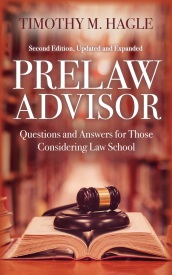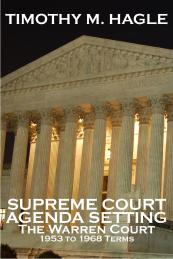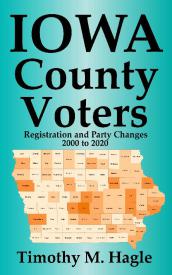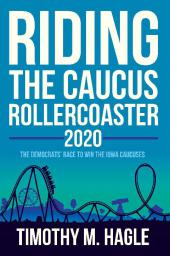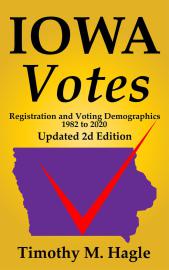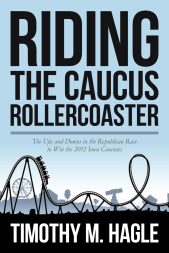
Contact Info
347 Schaeffer Hall
319-335-2348
timothy-hagle@uiowa.edu
Twitter: @ProfHagle
Fall 2024 Office Hours
Tue & Th: 4:45-6:15
Mailing Address
Dept of Political Science
341 Schaeffer Hall
20 E. Washington Street
The University of Iowa
Iowa City, Iowa 52242
News
Posted updated Prelaw FAQ for UI students
New Book, Riding the Caucus Rollercoaster 2024, published in paperback and for Kindle devices.
Posted updates to 12 papers in Iowa Voting Series for 2022 election data
New Book, Supreme Court Agenda Setting: The Warren Court, published for Kindle devices and computers with Kindle reader.
Published updated and expanded edition of Prelaw Advisor in paperback and for Kindle readers
My books
Miscellaneous Judicial Papers
This page contains some miscellaneous judicial papers that have not been published elsewhere.
Should I Stay or Should I Go? The Clash of Views on Supreme Court Retirements
Note: The paper below is an update and revisiting of my earlier paper "Strategic Retirements: A Political Model of Turnover on the United States Supreme Court" which you can find on JSTOR here. The earlier paper was published in 1993. The one below updates the data through 2008 and presents a new model.
Abstract: Hagle (1993) constructed a model to test whether Supreme Court justices engage in strategic behavior in their retirements. The model included several political variables that proved highly significant and supported the hypothesis. Since Hagle’s study, research works by Atkinson (1999), Brenner (1999), and Ward (2003) have examined the departures of Supreme Court justices in detail and have called into question whether political motivations influence the justices’ retirement decisions. Using Hagle’s model as a starting point, this study examines recent research, updates the data, and tests two new variables. The model is again estimated using Poisson regression. The model and the political variables, continue to be highly significant with the new data and one of the two new variables adds to the model’s explanatory power.
retire2ms3.pdf
Adobe Acrobat document [137.5 KB]
